10 Companion Plants for Rhubarb (With Pictures)
-
Pete Ortiz
- Last updated:
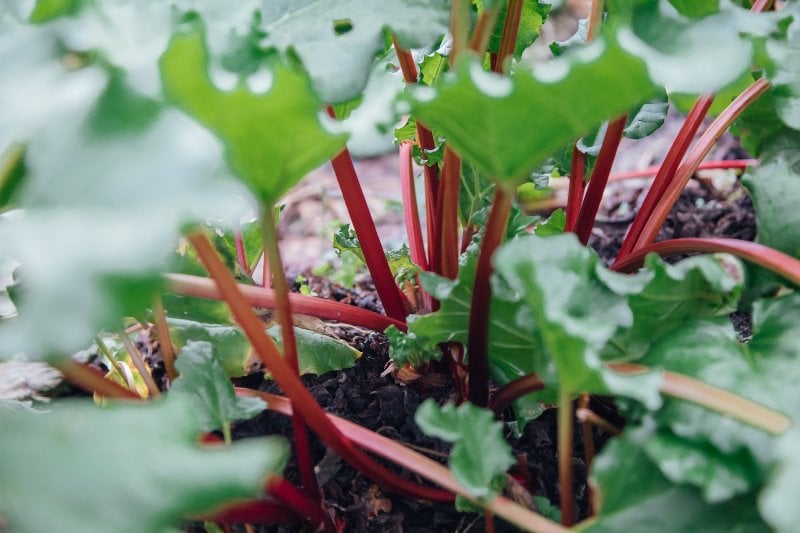
Rhubarb is an herbaceous perennial plant that does well in cool and moist conditions. The plant has vibrant pink stalks and large dark green triangular leaves. The fleshy stalks or petioles are edible and pack a sour flavor when eaten raw due to the high level of oxalic acid and anthrone glycosides.
Long ago, rhubarb was grown for medicinal purposes in Europe, and it is unclear when chefs adopted it for culinary practices. Other than being eaten raw, the delicious plant may be baked or used to dress other dishes. When baking or using it in pastries, use sugar to neutralize the sour taste.
While the plant is sensitive to temperature, growing it requires a few agricultural practices, including pairing it with companion plants. Companion planting is growing plants from different families nearby for various reasons. The most common is to buffer the main plant against pests and diseases.
The 10 Rhubarb Companion Plants
1. Garlic
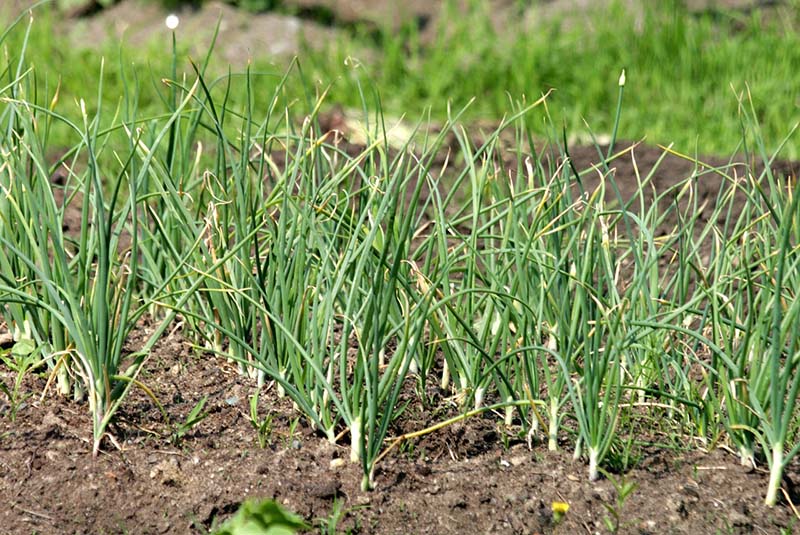
| Maturity Time: | 9–10 months |
| Benefits: | Repel pests |
| Proximity: | About 1–2 feet |
Garlic farming is always exciting. It has a pungent smell, not only making it a good insect repellent but also profiles many dishes with its unique flavor. Furthermore, the sight of garlic’s long narrow leaves growing adjacent to rhubarbs’ broad leaves is rewarding.
Garlic can be grown alone or with companion plants. When grown with rhubarb, the latter enjoys free protection from beetles and weevils that sack out the sap from the leaves and stalks of young plants.
To grow them, find a sunny place with deep and fertile soil, then dig out to uproot weeds and break down large lumps. You might add well-composted manure to boost the nutrient content. Plant rhubarb bulbs or seeds in large holes about a foot deep and wide with an inter-row spacing of 2 to 3 feet. The space between one plant to another must be at least 1.5 feet.
Plant a garlic clove after every rhubarb or in the space between two rows, and let the spacing between cloves be more than 6 inches.
2. Onions
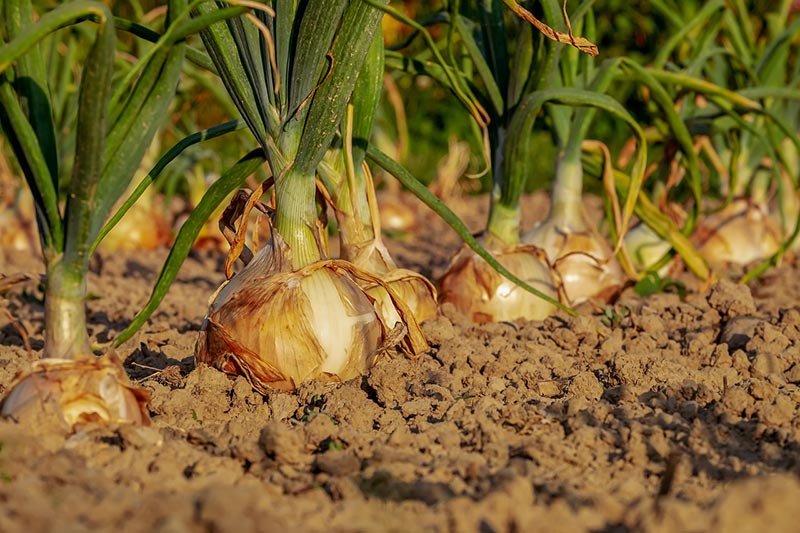
| Maturity Time: | 90 days |
| Benefits: | Repel aphids and improve rhubarb’s flavor |
| Proximity: | About 1–2 feet |
Similar to garlic, onion is an allium with a strong smell that deters Japanese beetles and aphids. The smell is caused by sulfur compounds which break down into an irritating gas after rupturing cells.
Onion is a good companion plant that improves the flavor of rhubarb and masks some of its sourness.
With narrow and long leaves, onions are stunning and don’t compete with rhubarb for nutrients and light. Lights easily penetrate through the leaves to benefit rhubarb.
3. Beans
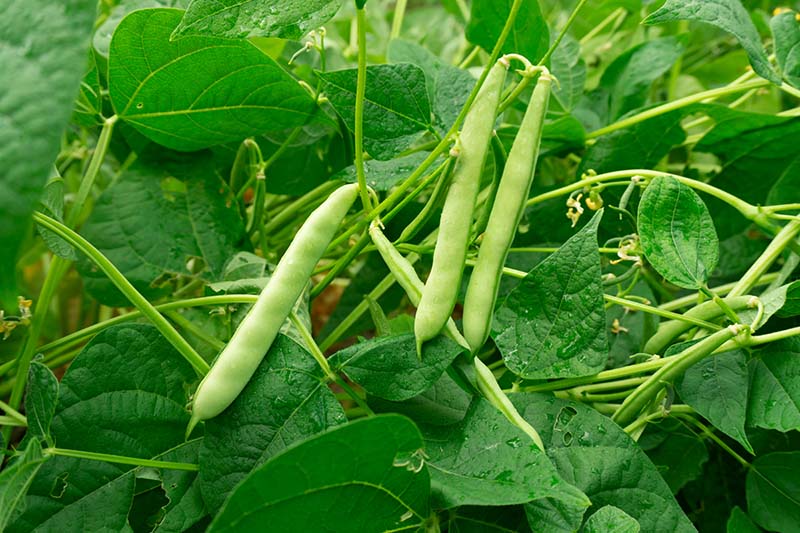
| Maturity Time: | 2–3 months |
| Benefits: | Nitrogen-fixing, shade, repelling pests |
| Proximity: | About 30 inches |
Beans farming is a profitable venture if you are looking for something to effortlessly engage in on the farm in summer. From sowing to harvesting takes less than 90 days, and the plant does well in most climatic conditions.
There are two varieties of beans to plant with rhubarb: bush and pole beans. Bush beans grow about 2 feet tall and do not require any form of support. They have strong stems to support the weight of fully mature stems and pods. The plant yellows up and dries after 3 months which you can harvest by uprooting it.
While the recommended spacing of bush beans is 3 to 5 inches from one seed to another, double up the spacing to allow more light to penetrate through to rhubarbs. Pole or vine beans are another variety of beans characterized by long slender stems that require external support. Examples are pinto and kidney beans.
Because they take up too much vertical space, plant one bean to another on an interval of 9 to 12 inches in rhubarb rows. Vine beans cast a shadow on the ground, so remember to prune lower leaves and branches as you harvest your way up.
The main advantage of growing beans is they have root nodules that fix nitrogen in the air into nitrates and nitrites, making it available for rhubarbs. Furthermore, the remains of bush beans can be used for mulching to cool the soil, conserve water, and release nitrogen and potassium stored in them after decomposition.
4. Strawberry
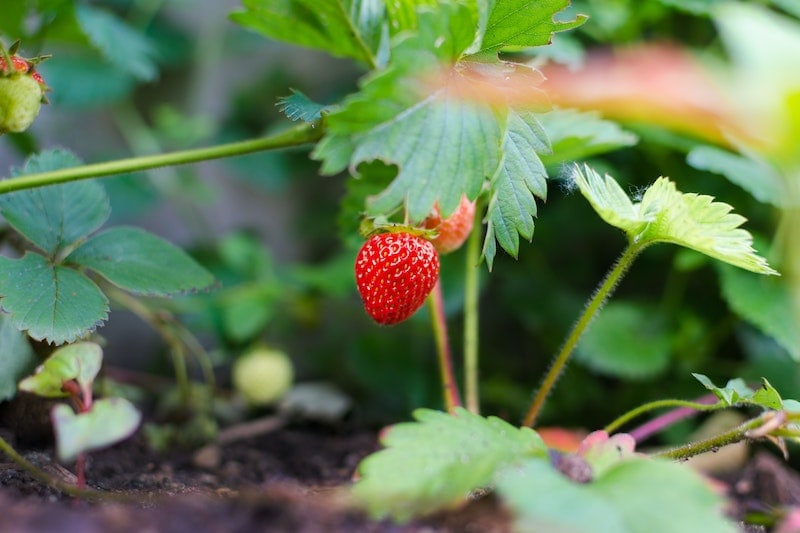
| Maturity Time: | 3–5 months |
| Benefits: | Attract pollinators |
| Proximity: | In rows about 2 feet apart |
Strawberries are small plants propagated by runners or stolons. Runners branch out from the main plant and develop new shoots, which anchor down to produce new runners again. Strawberries produce attractive bright red fruits appreciated for their high natural sugar content and volatile caramel-like aroma.
Planting strawberries with rhubarb has a symbiotic relationship. Strawberries cover the soil protecting it from erosion, attracting pollinators, and utilizing the available space efficiently, while rhubarb sheds young fruits against harsh sun. In the end, you have a dish full of fleshy fruits rich in vitamin C and crunchy stalks loaded with calcium, potassium, and manganese.
5. Broccoli

| Maturity Time: | 2–3 months |
| Benefits: | Repel whiteflies |
| Proximity: | About 12–18 inches |
Summer-grown broccoli is known to extend roots down to the subsoil. This is to allow the plant to scavenge for nitrogen. Nitrogen scavenging is the process of capturing nitrates and nitrites deep below the normal root zone that would otherwise leach and pollute underground water.
However, the essential element will only be available if, after harvesting, chop down broccoli stems and compost them or use them to mulch rhubarb.
Besides, broccoli being a frost-resistant crop protects rhubarb against harsh weather.
6. Turnips
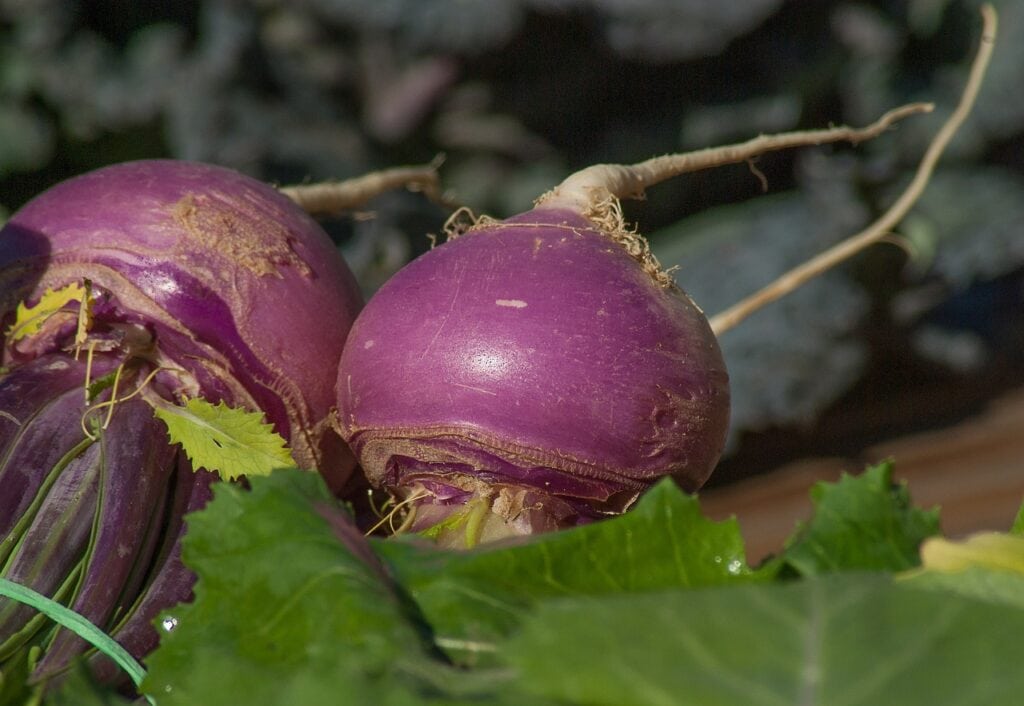
| Maturity Time: | 30–70 days |
| Benefits: | Repel pests |
| Proximity: | About 18 inches |
Turnips are an annual crop grown biennially in some regions with poor soils. Both the leaves and starch-filled tuber are edible. Though not proven, a few farmers argue that turnip leaves repel away aphids saving rhubarb from pest attacks. Scientifically, turnips’ fleshy leaves attract pests that would otherwise feed on rhubarb. Animals such as rabbits will spend more time eating turnip leaves and tubers, doing little damage to the main crop.
If you live close to a forest, plant several rows of turnips around rhubarb to create a buffer zone.
7. Mexican Marigold
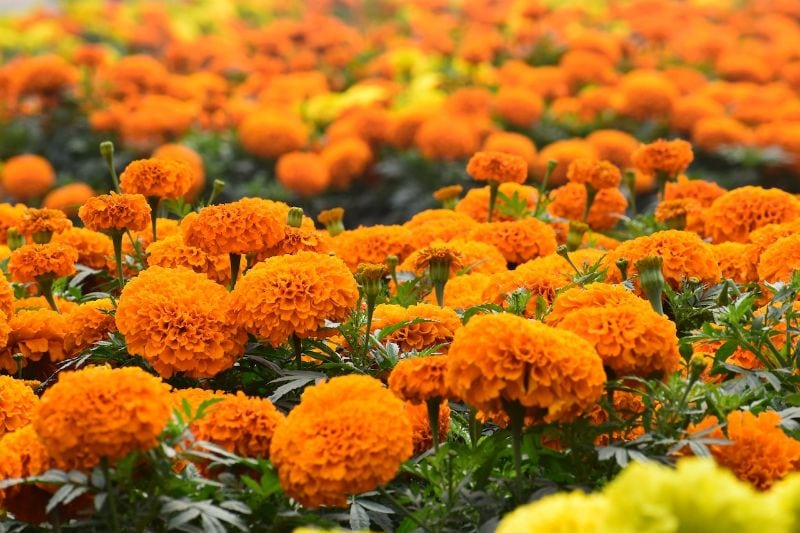
| Maturity Time: | 45–60 days |
| Benefits: | Repel pests and attract pollinators |
| Proximity: | About 1 foot |
There are over 50 species of Mexican marigold (Tagetes erecta) grown mostly for ornamental purposes. In present-day Mexico, Aztecs grew some marigold species for religious and recreational use.
They typically grow from 1 to 4 feet tall and feature a bright yellow or orange double-globular flower, which is almost 4 inches wide. When crushed, the leaves and flowers produce a distinct aroma that deters pests from attacking rhubarb.
Before planting, select an appropriate spot closer to the house and dig holes for rhubarb and Mexican marigolds. Plant rhubarb using standard spacing, and in between the rows, plant marigold seeds 1 foot apart.
Since marigold grows faster than rhubarbs, plant them after rhubarbs are at least 1 month old. The ornamental plant will germinate and, in 6 weeks, will be almost one foot high. So, prune down low-hanging leaves and branches to aerate rows.
For more protection, mulch rhubarbs at the edge of the garden with pruned branches.
8. Mint
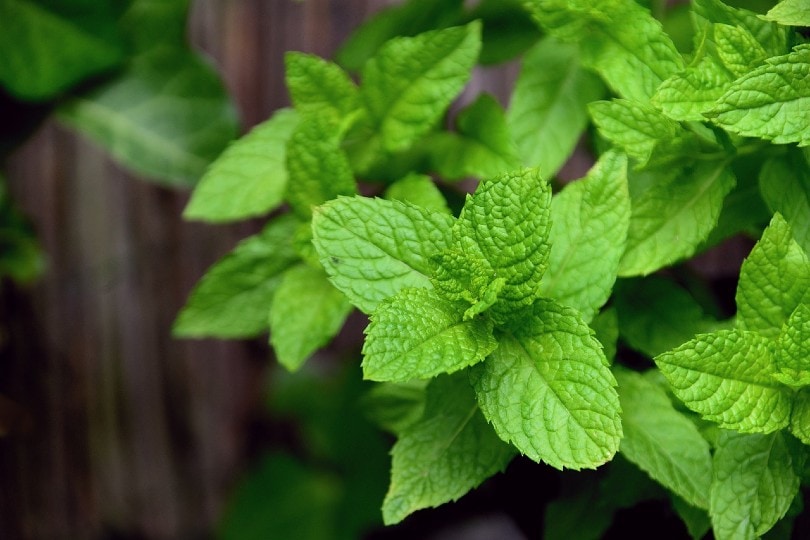
| Maturity Time: | 2–3 months |
| Benefits: | Repel pests |
| Proximity: | About 2 feet |
The primary flavor profile of mint is a sweet taste and cool sensation thanks to methanol molecules. They send electric signals to the brain, which then activates temperature receptors on the tongue. This makes you feel a cooling sensation when you breathe in through the mouth.
Mints are short, shallow-rooted, and germinate from stem cuttings. After planting, the mint will be up within a week, making it one of the fastest-growing companion plants.
To plant them, finely till the space in between rhubarb rows and lay mint cuttings or sprigs. Despite being a shallow-rooted plant, after the emergence of the first shoots, cuttings spread out very fast. The lemon-like aroma of mint is not pleasing to many pests. It will deter aphids, cabbage moths, white flies, and even flea beetles.
Pro tip: Mint is a notoriously hard-to-control weed that requires maximum attention when growing with other plants. Plant sprigs in areas you want them to grow to prevent uncontrolled spreading. Also, prune them heavily to tame their growth.
Another way to prevent mints from taking over your garden is planting them in pots. Find small pots about a foot in diameter, fill them up with soil and manure, and lay one or two mint cuttings. After sprouting, place them in between rhubarb rows. Prune off any overgrowth that threatens to spread out of the pot.
9. Cauliflower
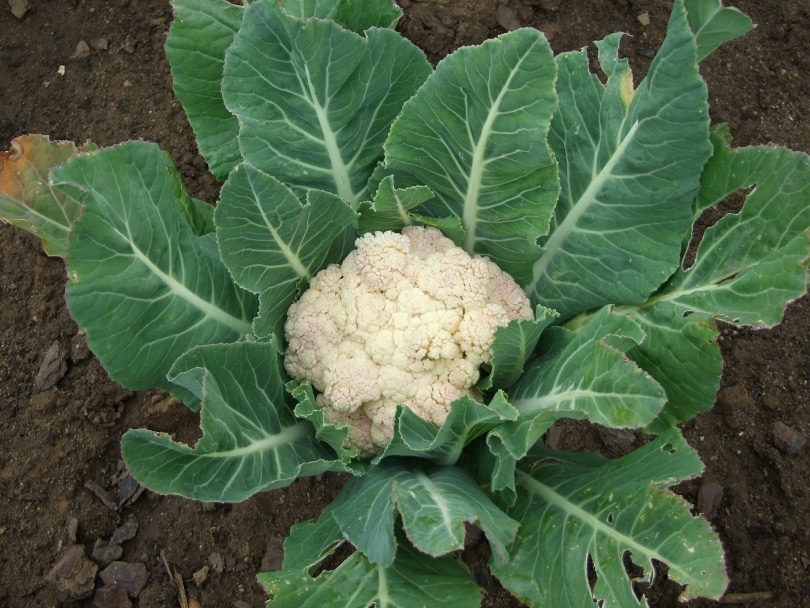
| Maturity Time: | About 3–5 months |
| Benefits: | Repel pests |
| Proximity: | About 40 inches |
Cauliflower and rhubarb are an ideal combo. Even though they cannot form a strong combo in comparison to the “three sisters” (maize, beans, and squash), the union benefits the soil and other plants.
Similar to broccoli, cauliflower has nitrogen-scavenging abilities. Its roots have a minimum and a working depth of 18 and 39 inches, respectively. They will absorb nitrogen from deeper soil layers and bring them to the surface after they die and decompose. This will benefit next year’s rhubarb crop.
Additionally, broccoli and beans attract and harbor beneficial insects and pollinators.
10. Thyme
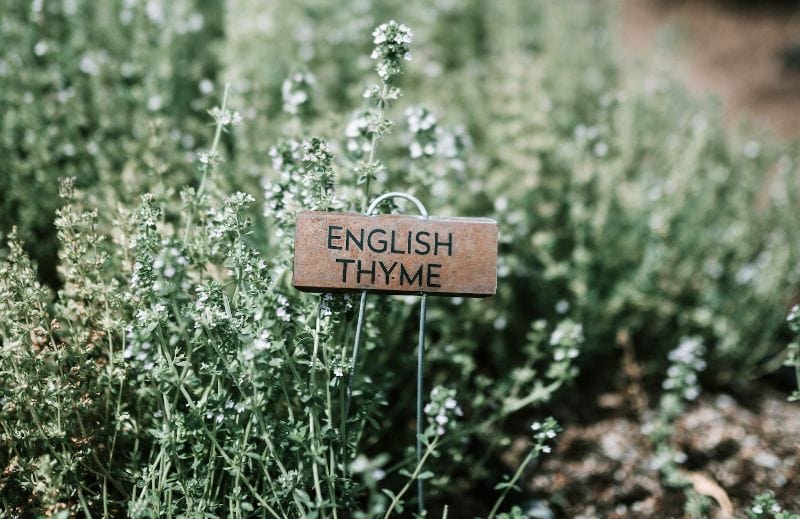
| Maturity Time: | 70 days |
| Benefits: | Repels pests and prevents root rot |
| Proximity: | About 18 inches |
Thyme plants carpet the ground to keep weeds out and cool the roots. They are light-feeders and do not step up competition for nutrients, which is why combining them with rhubarb is excellent.
Thyme also releases a strong aroma when touched, which masks food crops from pest attacks.
In some species, cooling roots in summer prevent bolting. Plants such as onions, spinach, and lettuce produce long stems bearing flowers in an attempt to produce seeds through bolting. The process reduces the overall yield and quality of the crop.
Planting thyme in rows of plants reduces soil temperature, one of the major causes of bolting.
The Worst Companion Plants for Rhubarb
When planted with the wrong types of plants, rhubarb will suffer, so it’s important to know which plants are most likely to inhibit its growth. The following plants are some of the worst companion plants for rhubarb and should be avoided at all costs if you want your rhubarb to flourish.
1. Melons
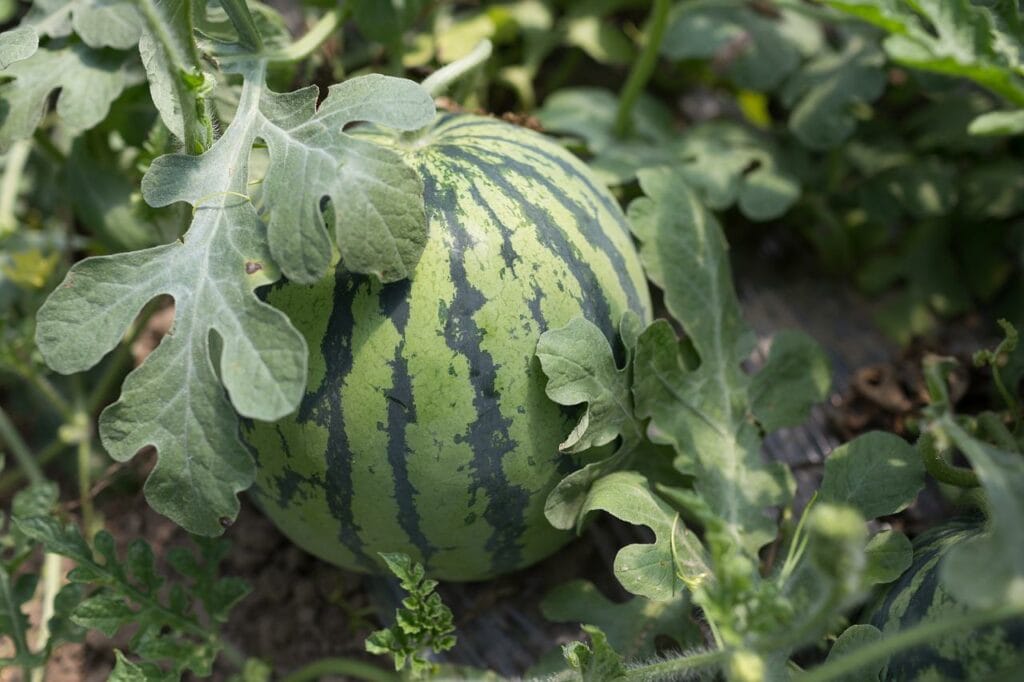
Cucurbits are famous for their phototropism: they can detect light from all directions and will tend towards it or away from it. Some crops like radishes and cucumbers will bend around a fence into a neighbor’s garden if they are close enough together. Melons, however, being monocots, have simpler anatomy; they will just stretch out sideways on either side of your rhubarb plant as far as possible. This is bad for rhubarb as they are at risk of wilting due to insufficient sunlight.
2. Tomatoes
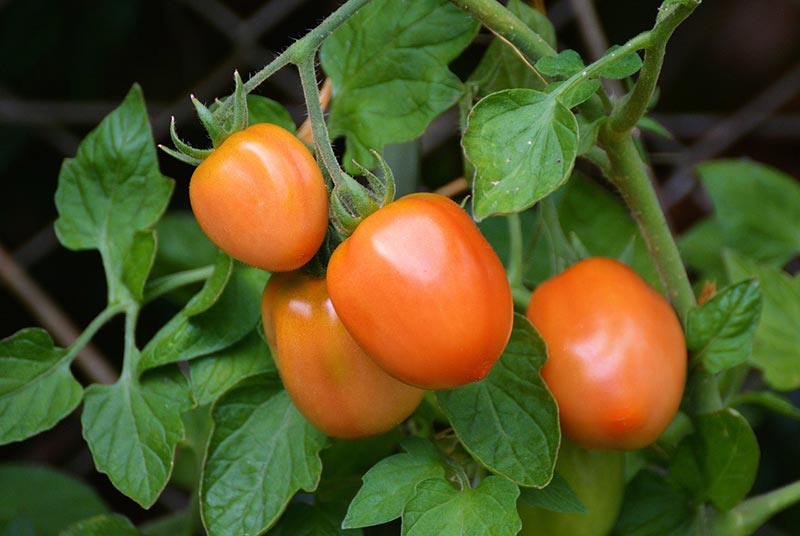
Even though they look good together in your garden, tomatoes, and rhubarb don’t really play well together. You see, tomato plants produce a lot of extra foliage and growth that often overwhelms whatever it is that they’re growing next to it. And when that happens, you end up with stunted rhubarb shoots.
3. Sunflower
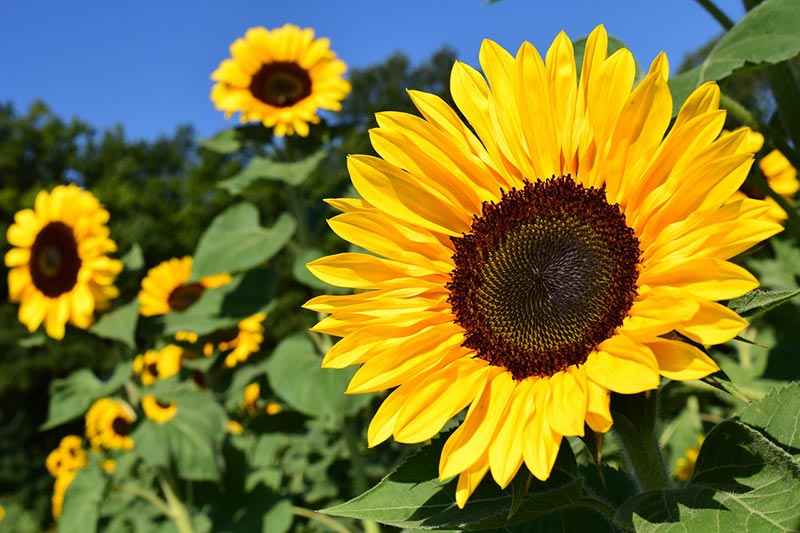
Since they attract the same weevil, rhubarb curculio, sunflowers are one of the worst companion plants for rhubarb. If you’re growing both of these plants in your garden and notice holes in your leaves, you likely have an infestation of these pests.
Conclusion
Rhubarb grows well in deep soils and cool weather. You can have a bountiful harvest when grown with or without companion plants. But the benefits of growing rhubarbs with companion plants are enticing. Grow rhubarbs with onion, garlic, mint, and Mexican marigold to deter pests and bunnies.
Leguminous plants such as bush and vine beans not only provide shade for young plants but also fixes nitrogen from the air into usable forms. Besides, take advantage of cauliflower and broccoli’s deep root system to bring leaching nitrate onto the top.
Lastly, plant thyme and strawberries near rhubarb roots to cool down the soil and form a conducive environment to harbor beneficial microorganisms.
- Cauliflower Companion Planting – Plants That Grow Well With Cauliflower.
- Mint Companion Plants – Evil Mint Has Some Redeeming Qualities – Bunny’s Garden.
- Magical Repelling Powers of Marigolds — Myth or Fact? | Piedmont Master Gardeners
- The Ability of Broccoli to Serve as a Best Management Practice – Salinas Valley Agriculture – ANR Blogs.
- Rhubarb Companion Gardening Guide
Featured Image Credit: kaori nohara, Unsplash
Contents


